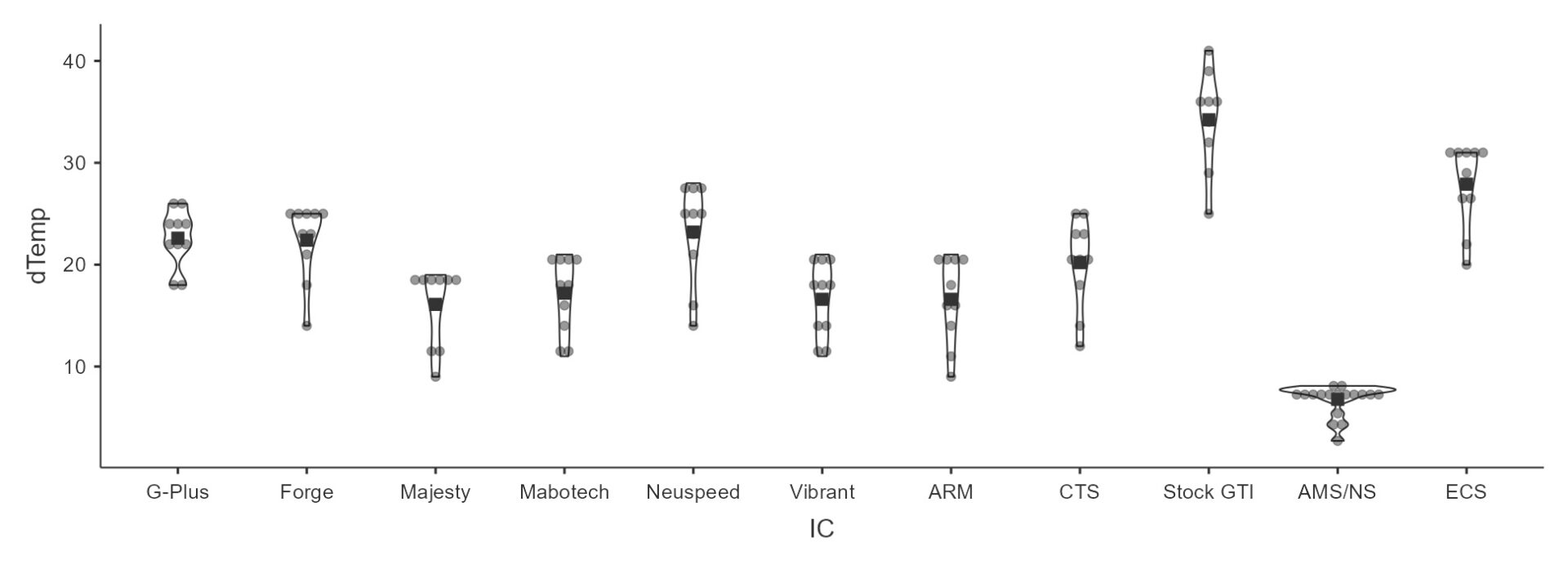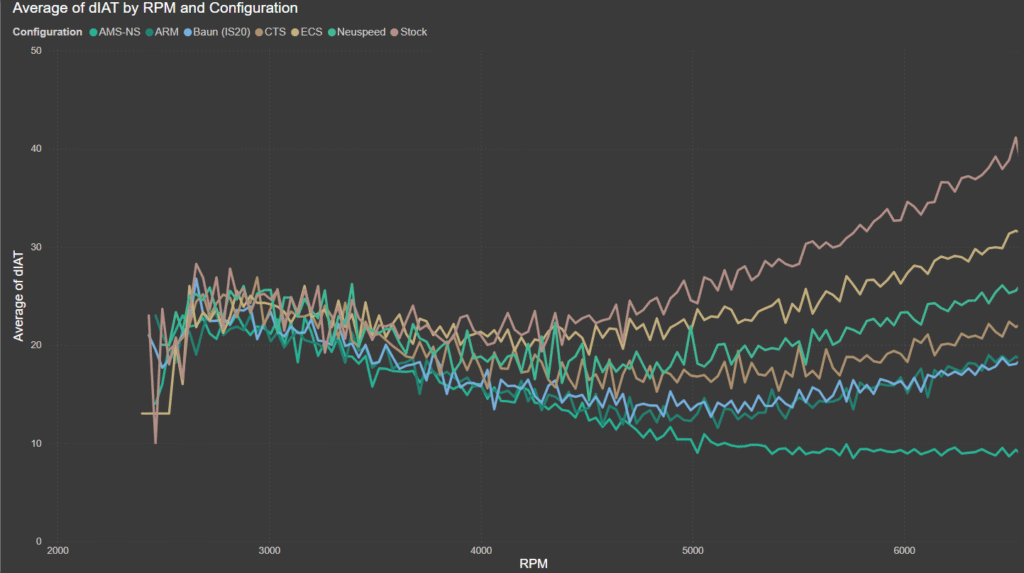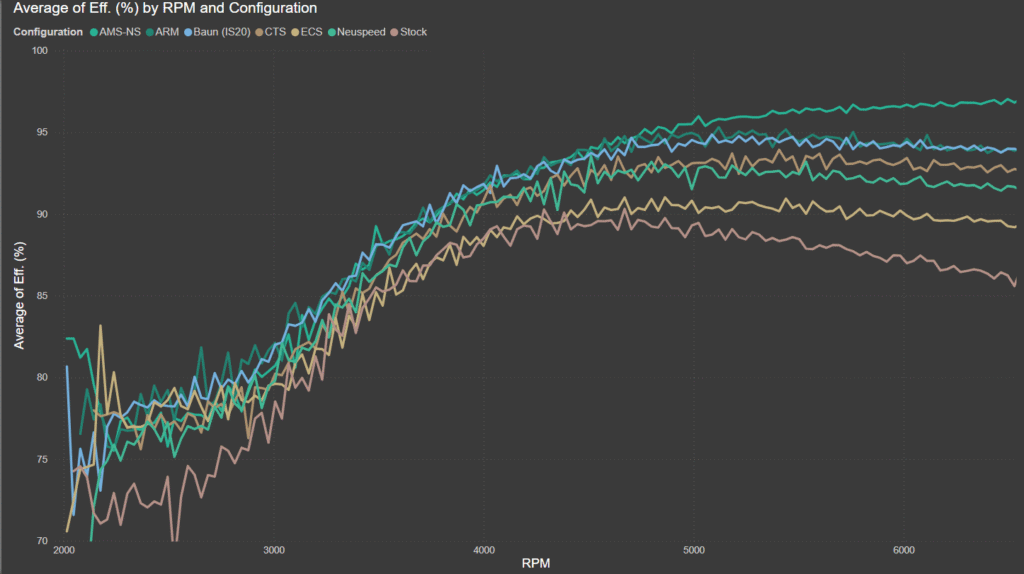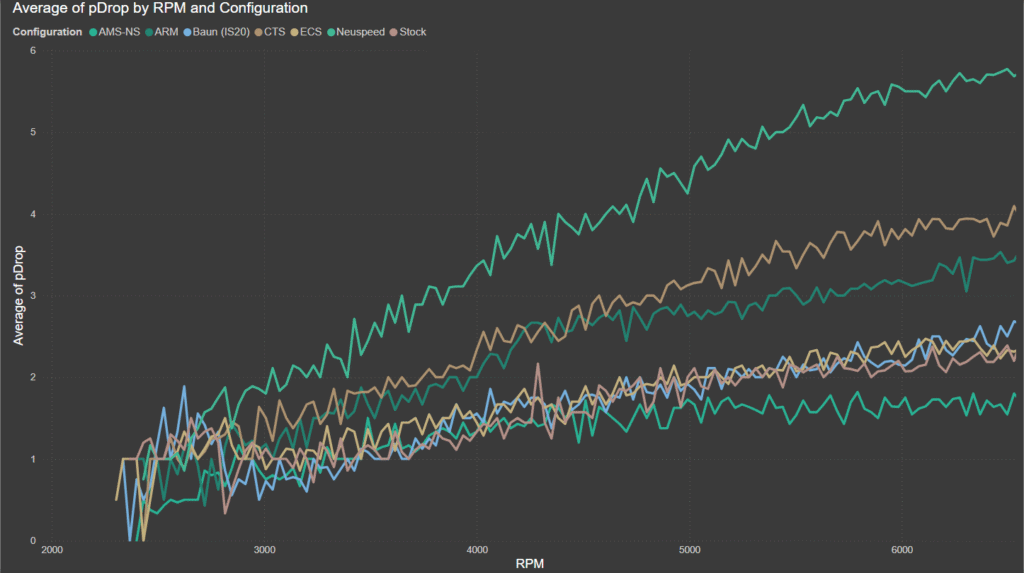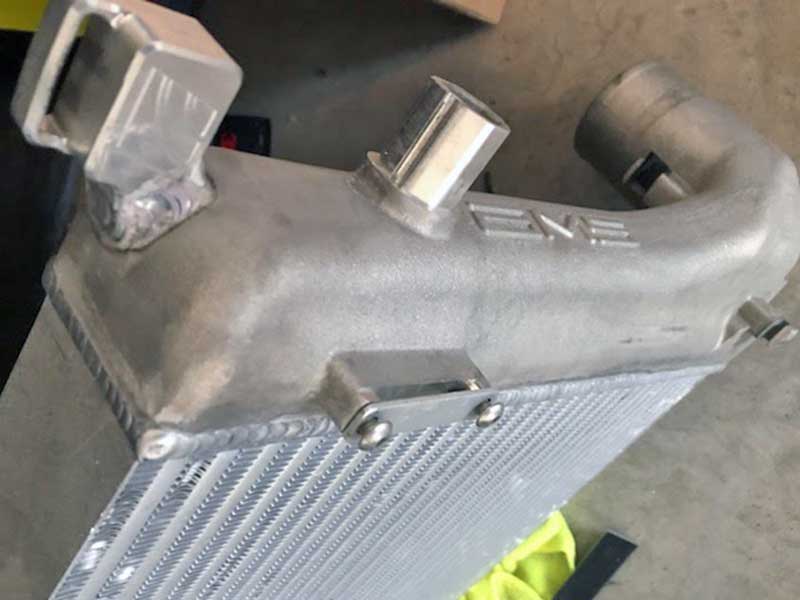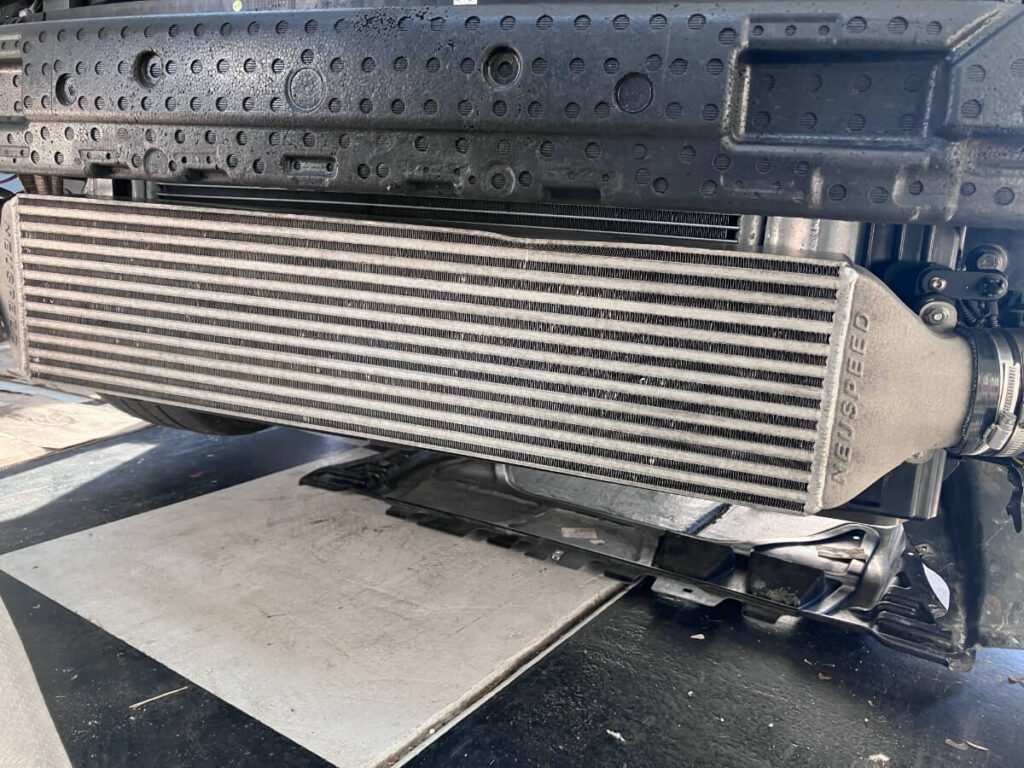Table of Contents
1.0 Background
1.1 Summary
This project continues an evaluation of intercoolers available for the Mk7 GTI.
Front-mounted intercoolers (FMIC) which are located in front of the air conditioner condenser are the system under test. Intercoolers that work in parallel with a stock location intercooler, referred to as a bicooler, are included in the scope of this test.
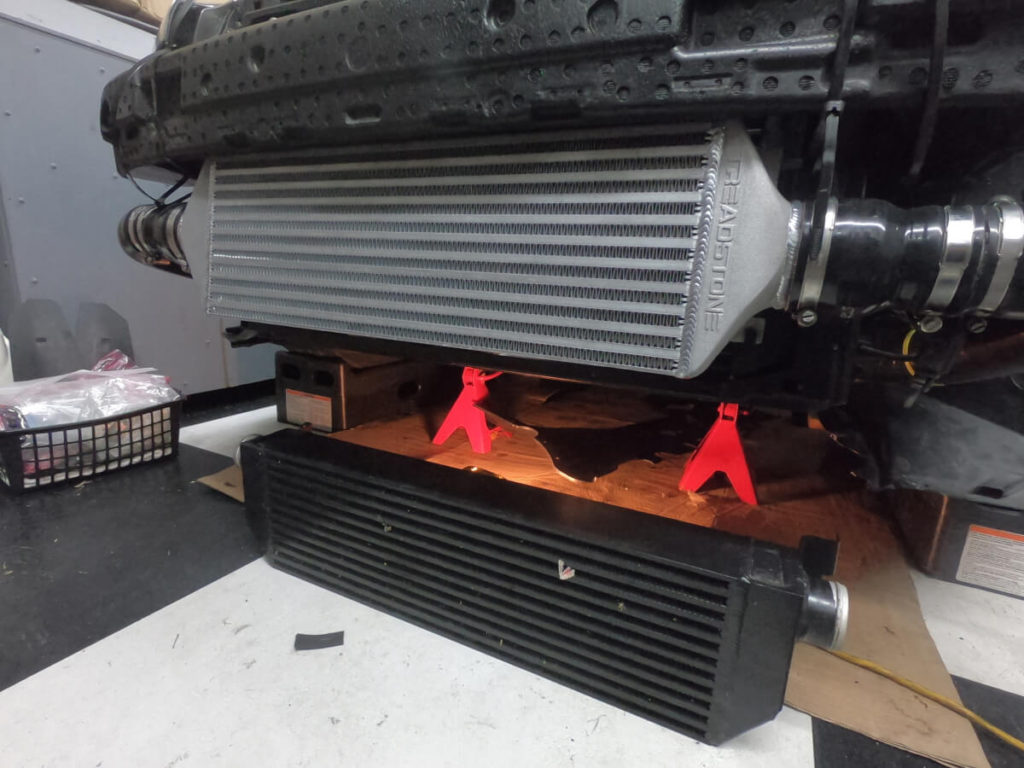
Two objectives of this test project are to increase the number of FMIC products with direct peer comparisons and expand the test conditions beyond those previously used.
1.2 Previous test results
All intercoolers in this effort have been part of previous flow testing. Some of the intercoolers have been previously tested on the street, but at the time of that testing, the GTI was equipped with an IS38 turbocharger whereas for this comparison the GTI will be equipped with an IHI IS20 turbocharger.
2.0 Purpose of test
Comparison – Objectively evaluate the vehicle and engine performance when changing between the available systems under similar operating conditions.
3.0 Systems under test
3.1 Intercooler
The Mk7 GTI is equipped from the factory with an air-to-air intercooler. This stock intercooler is located in front of the radiator and behind the air conditioning condenser. An alternative to the stock location intercooler is a variety of aftermarket front-mounted intercoolers (FMIC) that are located below the front bumper crash bar and in front of the air conditioning condenser.
A third option is a bicooler, which combines the front-mounted intercooler with the stock location intercooler using a pair of branched silicone hoses.
Both front-mounted and bicooler alternatives are the subject of this test series.
3.2 Test Item Table
As of April 2024, the following table lists the candidate front-mounted intercoolers for this test.
| Brand | Cost | Description | Status |
|---|---|---|---|
| ARM Motorsports | $547 | 22″ x 9″ x 3.25″ – Bar & Plate | Acquired |
| Baun Performance | $900 | 22″ x 9.25″ x 3.25″ – Bar & Plate | Acquired |
| CTS Turbo | $450 | 24″ x 8″ x 2.75″ – Bar & Plate | Acquired |
| ECS Tuning | $550 | 26” x 7 ⅞” x 3.0” – Bar & Plate | Acquired |
| JD Eurosport | $800 | 24″ x 7.8″ x 3.5″ – Bar & Plate | Skip |
| Neuspeed | $850 | 26″x 6.5″x 3″ – Bar & Plate | Acquired |
| Treadstone TR8C | $272 | 22″ x 7.8″ x 3.5″ – Bar & Plate | Acquired |
| Majesty | $370 | Bicooler | Acquired |
| Mabotech | $700 | Bicooler | Acquired |
| G-Plus | $325 | Bicooler | Acquired |
| Forge Motorsport | $882 | Bicooler | Acquired |
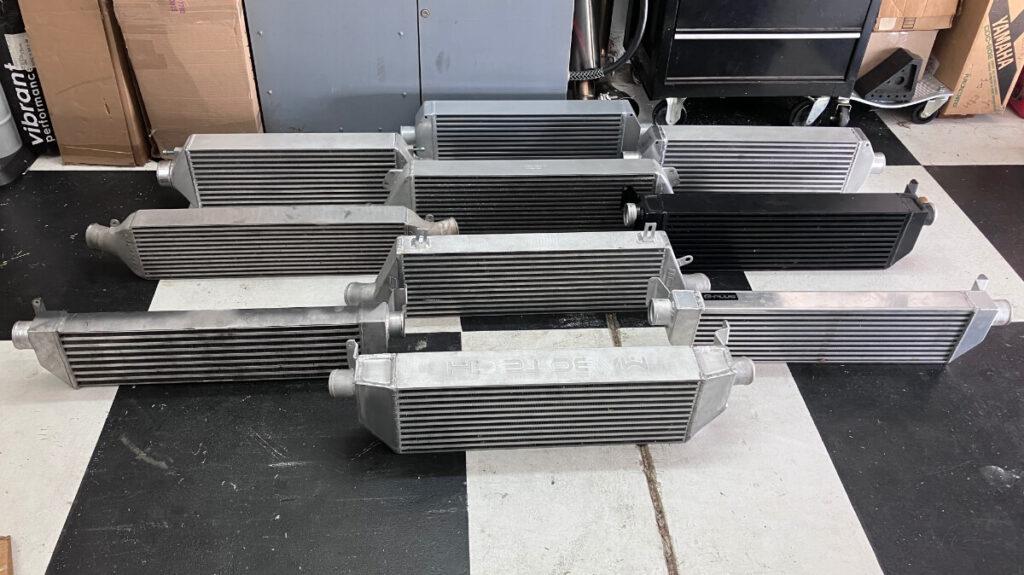
3.3 Mk7 GTI
The intercoolers will be installed on a Mk7 GTI operating with an IHI IS20 Turbocharger and an aftermarket customized Stage 2 tune from Stratified Automotive Controls. The boost curve for this tune is shown below.
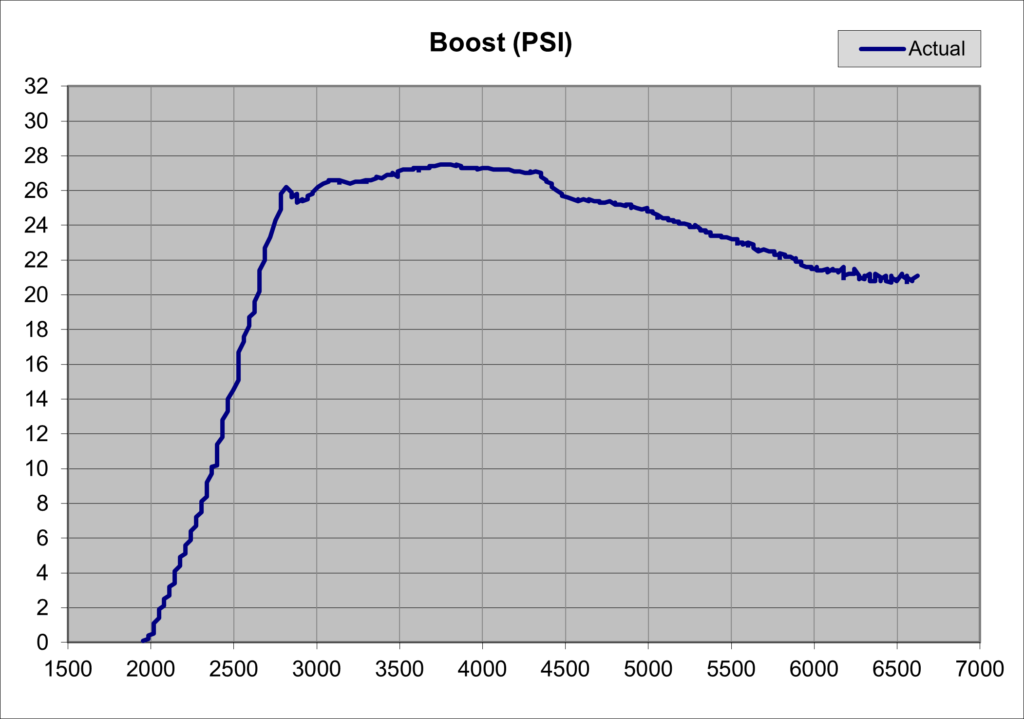
3.4 Test Instrumentation
Temperature measurements will be made using the vehicle’s built-in sensors and supplemental Resistance Temperature Detectors (RTD).
Pressure measurements will be made using the vehicle’s built-in sensors and a supplemental 4 Bar MAP sensor.
Data will be recorded using a DATAQ DI-149 high-speed data logger and a Cobb Accessport.
Vehicle acceleration data will be recorded using a Racebox logger.
4.0 Scope of Intercooler Test
4.1Test Environment
Temperature readings will be made while the vehicle is operating on the street. The GTI will not be tested on a Dynamometer which would result in the vehicle being stationary and susceptible to unrealistic airflow through the intercooler.
4.2 Test and Test Conditions
- Third gear acceleration – Full-throttle acceleration in third gear up to a minimum engine speed of 6300 RPM.
- Sequential loading – Repeated acceleration and deceleration cycles across a speed range including 47 mph to 84 mph for a minimum of 9 pulls.
4.3 Test Criteria
4.3.1 Assessment Standards
Success / Failure criteria – Products will be evaluated for performance differences relative to other products. There are no predetermined threshold or objective values against which the products will be evaluated.
An AMS stock location aftermarket intercooler paired with a Neuspeed Golf R FMIC as a bicooler pair will be recorded to provide comparison data.
A stock Mk7 GTI intercooler will be recorded to provide comparison data.
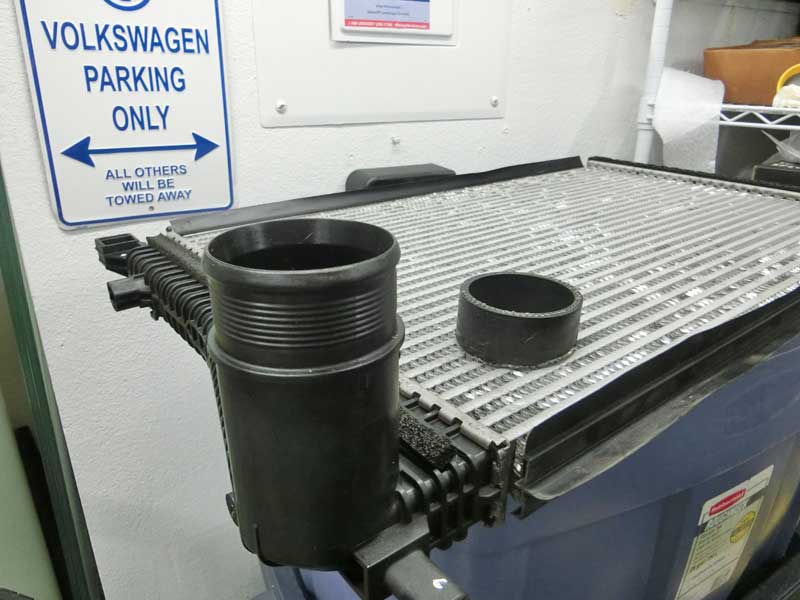
4.3.2 Completion Standards
Testing will end when sufficient cooling and airflow data is recorded to support a comparison of the measures of interest for the test articles.
4.4 Limitations to Scope
There are a number of operating conditions that an intercooler could be subjected to that will not be evaluated during this test. Some examples are 0 to 60 mph acceleration, 60-130 mph full-throttle acceleration, autocross, drag strip, and road course driving.
There are several aftermarket intercooler cores available that could be built into a custom intercooler product. There are no plans to have a custom-built intercooler be part of this test.
There are aftermarket FMIC options for the Mk7 that require extensive modification to the front crash bar to fit on the GTI. These products are not part of the test.
The hoses that most of these intercoolers use to join with the charge pipes are sized to work with the stock charge pipes. There is no provision in the stock throttle body charge pipe to install a temperature probe. The intake air temperature (IAT) inside the intake manifold only provides accurate readings when there is a high airflow rate through the intake manifold. This will limit useful measurements to conditions of high airflow.
The intercooler efficiency is calculated by measuring the air temperature leaving the turbocharger and subtracting the intake air temperature. This value is compared with the turbocharger outlet air temperature after subtracting the ambient air temperature. The temperature measurement at the turbocharger compressor outlet will be higher than the temperature of the air entering the intercooler due to the cooling of the air as it passes through the hot side charge air pipe. This will cause the calculated efficiency to be higher than if the measurement was made at the intercooler inlet. Since all intercoolers will be measured at the same location, the relative standings will not be affected.
5.0 Method of Intercooler Test
5.1 Test Methods and Procedures
Full-throttle third-gear acceleration from 2000-6500 RPM
The GTI is operated with the DSG transmission in manual mode and third gear. When the engine RPM is around 2000 the accelerator pedal is fully depressed and the car is continuously accelerated to an engine RPM of 6500. The car is then slowed and the transmission returned to automatic mode.
The car is driven for a short time before repeating the process in sequence nine more times. An example recording session is shown below:
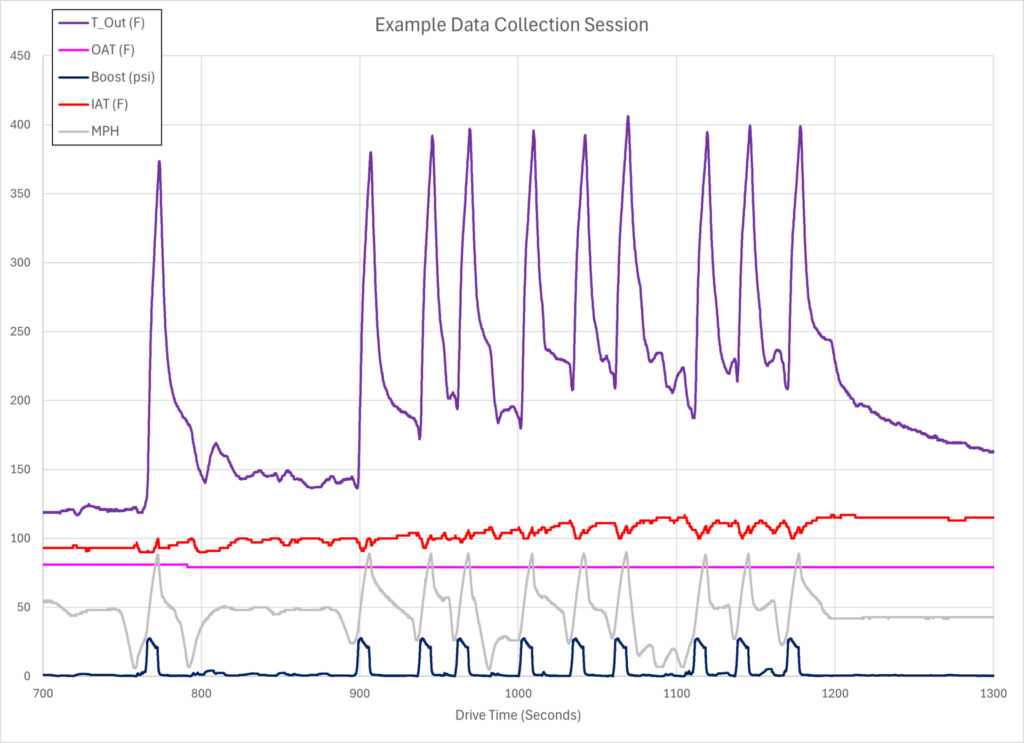
The acceleration time from 47 mph to 84 mph is measured by the Racebox and/or Dragy.

5.2 Key Contributing Factors
| Factors | Type | Action | Range | Ease of Control | Data Type | Comment |
|---|---|---|---|---|---|---|
| Ambient air temperature | Constant | Hold | 78-85F | Moderate | Continuous | Primary concern for response. |
| Boost pressure | Constant | Hold | 0-28 psi | Easy | Continuous | Varies but with repeatability |
| Starting IAT | Covariate | Record | ~80-120F | Hard | Continuous | IAT sensor inaccuracy |
| Time under load | Constant | Hold | 4-5 seconds | Moderate | Continuous | |
| Fuel Quantity | Noise | Ignore | 33-100% | Easy | Continuous | Factors in vehicle weight that affects acceleration rate |
| Recovery interval time | Covariate | Record | 10-200 seconds | Hard | Continuous | IAT sensor inaccuracy |
| Recovery interval avg. speed | Noise | Ignore | 30-50 mph | Moderate | Continuous | IAT sensor inaccuracy |
| Cycles | Constant | Hold | 10 | Easy | Integer | |
| Intercooler | Control | Vary | 1 thru 10 | Easy | Nominal |
Note: In the above table, Control factors are purposely varied. Covariate factors are allowed to take on values without intervention but are recorded. Constant factors are held fixed at a particular level. Noise factors are essentially ignored.
5.3 Key Response Variables
| Response | Description | Unit of Measure |
|---|---|---|
| IAT | Intake Air Temperature measured inside the intake manifold – KPP | Degrees Fahrenheit |
| Pressure Drop | The pressure difference between the turbocharger compressor outlet and intake manifold | Pounds per square inch |
| Delta T | Difference between the Intake Air Temperature and Outside Air Temperature | Degrees Fahrenheit |
| T-Out | Air temperature at the turbocharger compressor outlet | Degrees Fahrenheit |
| Efficiency | Intercooler efficiency. Turbo compressor discharge air temperature versus outside air temperature (OAT) compared with intake air temperature versus OAT | Percent |
| Acceleration Time | Time to accelerate vehicle from 47 mph to 84 mph | Seconds |
| Peak WHP | Calculated from the vehicle acceleration data using Virtual Dyno. | Horsepower |
6.0 Project Management
6.1 Supplies
Products available for testing are identified in section 3.2 Test Item.
6.2 Reports
6.2.1 Product test results
The following links are to pages dedicated to presenting the detailed results for each intercooler.
- Stock Mk7 GTI – Baseline
- AMS / Neuspeed – Baseline
- ECS Tuning FMIC – Data Collection
- CTS Turbo FMIC – Data Collection
- ARM Motorsports FMIC – Data Collection
- Baun Performance FMIC – Data Collection
- Neuspeed FMIC – Data Collection
- G-Plus Bicooler – Data Collection
- Forge Bicooler – Data Collection
- Majesty Bicooler – Data Collection
- Mabotech Bicooler – Data Collection
6.2.2. Test result summary
